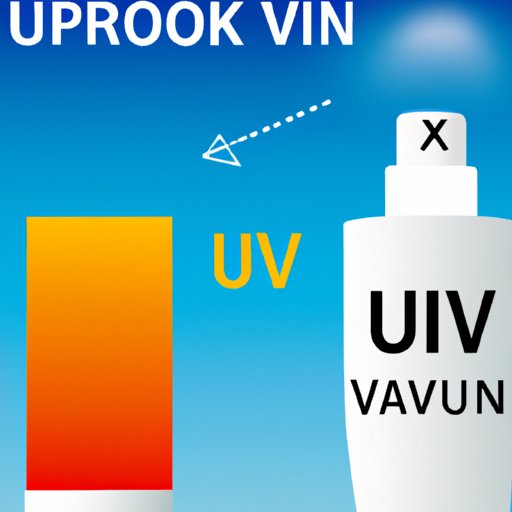
Introduction
There’s a pervasive myth that cloudy days offer protection from the sun’s harmful rays, but is it true? Can you get sunburned on a cloudy day? In short, yes. This misconception puts many people at risk for sunburn and even skin cancer, so it’s important to clear up the confusion.
The Hidden Risks of Cloudy Days: How to Protect Yourself from Sunburn
The World Health Organization (WHO) warns that anyone spending time outside is at risk for sunburn. Children, people with fair skin, and those with a history of sunburn or skin cancer are most at risk. Understanding the UV index, which measures the strength of the sun’s UV radiation, is key to protecting yourself. The higher the index, the stronger the rays and the greater risk for sunburn. Wearing protective clothing and hats also help reduce the risk of sunburn.
Don’t Be Fooled by the Clouds: Debunking the Myth That You Can’t Get Sunburned on Overcast Days
Clouds may block some UV rays, but they don’t offer complete protection. UV rays can penetrate through clouds, and some types of clouds are better at blocking UV rays than others. Many people have experienced sunburn on overcast days and assumed they were safe from the sun’s harmful rays. It’s essential to use sun protection, even on cloudy days.
Cloud Cover Doesn’t Mean Protection: Understanding the Science Behind Sunburn on Cloudy Days
UV radiation is the cause of sunburn and skin damage. Cloud cover can alter the amount of UV radiation that reaches the Earth’s surface. Thick, dark clouds block more UV radiation than thin, light-colored clouds. However, even thin clouds can cause sunburn and skin damage. It’s important to check the UV index regularly, especially on cloudy days when it’s easy to underestimate the strength of UV radiation.
The Surprising Truth About Sunburn and Clouds: What You Need to Know to Stay Safe
UV radiation comes in two forms, UVA and UVB. UVA rays penetrate the skin more deeply and contribute to skin aging, while UVB rays cause sunburn and are the primary cause of skin cancer. Protecting yourself from both types of UV radiation is crucial for maintaining healthy skin. Wear protective clothing, hats, and sunglasses, and use broad-spectrum sunscreen to block UVA and UVB rays.
Sunscreen: Not Just for Sunny Days Anymore
Sunscreen is essential regardless of the weather conditions. It’s important to choose the right sunscreen for your skin type and activity level and apply it regularly throughout the day. Physical sunscreens, like zinc oxide and titanium dioxide, block UV rays by creating a physical barrier on the skin. Chemical sunscreens, like oxybenzone and avobenzone, absorb UV radiation before it can penetrate the skin. Choose a broad-spectrum sunscreen to protect from both UVA and UVB rays and a minimum SPF of 30.
The Importance of SPF: Why You Need to Wear Sunscreen Even on Cloudy Days
SPF stands for Sun Protection Factor and measures a sunscreen’s ability to block UVB rays. The higher the SPF, the longer you can spend in the sun without burning. However, no sunscreen can offer complete protection, so it’s important to reapply regularly and seek shade during the hottest part of the day. The amount of time spent in the sun also affects the risk of sunburn. Even on cloudy days, it’s wise to protect yourself with sunscreen and other protective measures.
Conclusion
Don’t be fooled by the clouds – you can get sunburned on a cloudy day. Understanding the risks and taking precautions will help you stay safe in the sun. Remember to check the UV index, wear protective clothing and hats, and use broad-spectrum sunscreen with a minimum SPF of 30. Staying safe in the sun is key to maintaining healthy skin.




